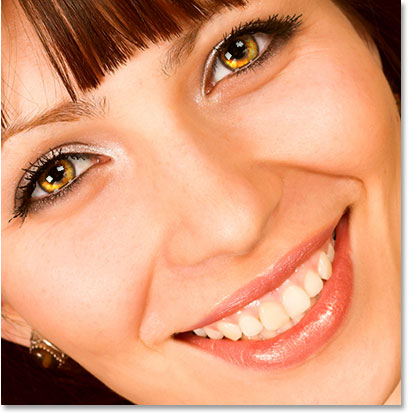Unveiling Elegance: A Comprehensive Guide to Photoshop Fashion Retouch – Shadowy, Sultry Eyes

Introduction:
In the realm of fashion photography, the eyes stand as the windows to the soul, captivating viewers with their expressiveness and allure. Photoshop has emerged as an invaluable tool for fashion retouching, offering photographers the means to enhance and accentuate the captivating gaze of their subjects. In this comprehensive guide, we delve into the intricate art of Photoshop fashion retouching, focusing on the creation of shadowy, sultry eyes that exude mystery, depth, and undeniable allure.
The Importance of Eyes in Fashion Photography:
Eyes play a pivotal role in fashion photography, acting as a focal point that draws viewers into the narrative of an image. The expression, intensity, and radiance of the eyes can profoundly impact the overall mood and aesthetic of a photograph. Photoshop, with its advanced retouching capabilities, empowers photographers to elevate the allure of eyes, creating a visual language that communicates sophistication, mystery, and a sense of timeless elegance.
Essential Tools for Fashion Retouching – Shadowy, Sultry Eyes:
- Selection Tools:
- Begin the retouching process by carefully selecting the eyes using precise tools such as the Lasso tool or the Pen tool.
- Ensure accurate and refined selections to isolate the eyes for targeted adjustments.
- Adjustment Layers:
- Leverage the power of Adjustment Layers for non-destructive retouching, allowing for flexibility and easy experimentation.
- Commonly used adjustment layers for enhancing eyes include Curves, Levels, and Hue/Saturation.
- Curves Adjustment Layer:
- Use the Curves Adjustment Layer to control the overall brightness and contrast of the eyes.
- Create anchor points on the curve to enhance shadows and highlights, sculpting the desired shadowy effect.
- Levels Adjustment Layer:
- The Levels Adjustment Layer provides control over the tonal range of the eyes.
- Adjust sliders to refine the brightness and contrast, achieving a balanced yet sultry look.
- Hue/Saturation Adjustment Layer:
- Fine-tune the color intensity of the eyes using the Hue/Saturation Adjustment Layer.
- Adjust the saturation and hue sliders to enhance or modify the eye color for added impact.
- Dodge and Burn Tools:
- Apply the Dodge (lighten) and Burn (darken) tools to enhance specific areas of the eyes selectively.
- Emphasize highlights, deepen shadows, and contour the eyes to create a shadowy, sultry effect.
- Brushes for Detailing:
- Utilize soft brushes with low opacity for detailing and refining the iris and pupil.
- Add subtle highlights and shadows to mimic natural light reflections for a realistic and captivating look.
- Custom Brushes for Eyelashes:
- Create custom brushes to enhance eyelashes and add definition to the lash line.
- Use these brushes sparingly to maintain a natural appearance while accentuating the eyes.
Advanced Techniques for Depth and Realism:
- Selective Sharpening:
- Apply selective sharpening to enhance the intricate details of the eyes.
- Use the Unsharp Mask or Smart Sharpen filter with caution to avoid over-sharpening and maintain a realistic look.
- Eye Highlights and Catchlights:
- Enhance eye highlights and catchlights to add a mesmerizing sparkle.
- Create or accentuate existing catchlights for a subtle yet impactful effect.
- Color Grading and Toning:
- Experiment with color grading and toning to enhance the overall atmosphere of the image.
- Apply subtle color adjustments to harmonize the eyes with the color palette of the photograph.
- Iris Enhancement:
- Refine the iris by adding subtle details and textures.
- Use the Clone Stamp or Healing Brush tool to address imperfections while maintaining a natural appearance.
- Eyebrow Refinement:
- Pay attention to the eyebrows, refining their shape and adding definition.
- Use the Brush tool with a soft edge to fill in sparse areas for a polished look.
- Eyelid Contouring:
- Contour the eyelids for added depth and dimension.
- Apply subtle shading to accentuate the natural curves and contours of the eyelids.
Workflow Integration and Efficiency:
- Layer Organization:
- Keep your Photoshop layers well-organized for a streamlined workflow.
- Use groups and naming conventions to easily identify and adjust specific elements during the retouching process.
- Brush Presets:
- Create and save custom brush presets for commonly used retouching tasks.
- This ensures consistency and efficiency when applying specific brush settings across different images.
- Smart Objects:
- Convert layers to Smart Objects to maintain flexibility in your editing process.
- Smart Objects allow for non-destructive transformations and adjustments, preserving the original image quality.
- Collaborative Editing:
- Collaborate with makeup artists and stylists during the editing process to align the retouching with the overall vision of the photoshoot.
- Collect feedback and make adjustments collaboratively for a cohesive and polished final result.
Conclusion:
The creation of shadowy, sultry eyes in Photoshop fashion retouching is an art that demands precision, creativity, and an understanding of the subtleties that contribute to a captivating gaze. By mastering the essential tools, employing advanced techniques, and integrating efficient workflow practices, photographers can elevate their fashion portraits to new heights.
Photoshop serves as a dynamic canvas for the realization of artistic visions, allowing photographers to shape and enhance the eyes in a way that communicates depth, mystery, and timeless elegance. As photographers embark on the journey of fashion retouching, the fusion of technical expertise and creative intuition will undoubtedly lead to images that captivate audiences, leaving a lasting impression of sophistication and allure.







